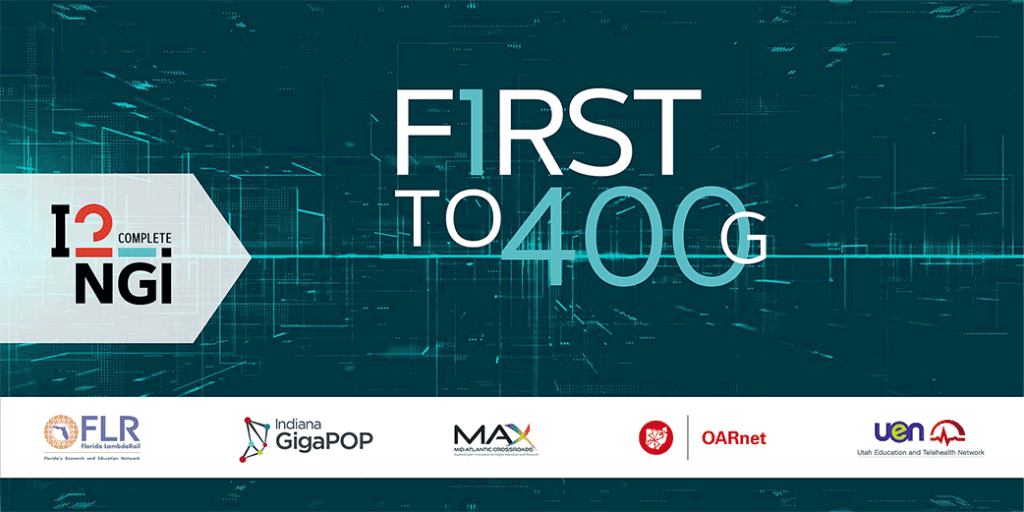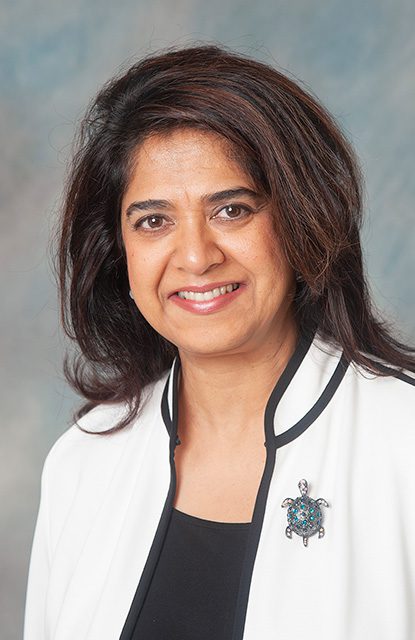By
Amber Rasche - Communications Manager, Internet2
Estimated reading time: 6 minutes

 Tripti Sinha, Executive Director of Mid-Atlantic Crossroads (MAX)
Tripti Sinha, Executive Director of Mid-Atlantic Crossroads (MAX)
Internet2 recently unveiled its fifth-generation backbone, known as the Next Generation Infrastructure (NGI). NGI interconnects with 37 state and regional networks and serves every state in the U.S. Among these 37 are the first five to upgrade to 400 gigabits per second connectivity: Florida LambdaRail, Indiana GigaPOP, Mid-Atlantic Crossroads, Ohio Academic Resources Network, and Utah Education and Telehealth Network. In this “First to 400G” blog series, we spotlight each of these networks and how NGI’s new capabilities and capacity meet the needs of the broader research and education communities.
Tripti Sinha is the executive director of Mid-Atlantic Crossroads (MAX) – a multi-state regional network led by the University of Maryland. In this Q&A, Tripti discusses MAX’s mission in support of the region’s higher education institutions, federal agencies, and research organizations; the opportunities and challenges driving MAX constituents’ connectivity needs; and what’s next on the horizon.
Tell us more about Mid-Atlantic Crossroads (MAX). What is your organization’s mission? What is the scope of the communities and institutions you serve – in other words, who depends on your infrastructure and how do they use it?
Tripti Sinha: Mid-Atlantic Crossroads (MAX) is a multi-state regional network led by the University of Maryland. This network is the foundation for a high-performance infrastructure that provides state-of-the-art network technology and services, serves as a connector and traffic aggregator to the Internet2 national backbone, and peers with other major networks.
Our mission is to provide a customer-centric, leading-edge, and always-evolving networking and cyberinfrastructure platform with innovative services designed for the needs of the research and education community.
MAX serves higher education institutions, federal agencies, research labs, research-focused organizations, and other affiliate members in the Washington D.C., Maryland, and Virginia metropolitan areas. These customers utilize our advanced infrastructure to meet their mission requirements and support their core services and tailored networking needs, as well as for the high-speed transmission of data and other science and research needs.
MAX has been interconnected with Internet2’s backbone since 2000 and an Internet2 member since 2007. From your perspective, how has being part of the community supported your mission and constituents?
Tripti Sinha: Being part of the Internet2 community has contributed to MAX maintaining a leading-edge infrastructure that connects to strategic points within the research and education community. That enables endless opportunities for collaboration and research, and better serves our research and education customers through the continuous evolution and provisioning of innovative and advanced services.
One of our strategic goals is to provide high-capacity and reliable transport infrastructure for our customers. Our interconnection with Internet2 helps us deliver on this goal.
What was your network capacity prior to the recent upgrade, and how did you know it was the right time to upgrade to 400G?
Tripti Sinha: MAX’s network capacity consisted of 100G links before the upgrade. We knew it was time to upgrade to 400G when the technology landscape began demanding higher-capacity networks and solutions with greater speed and reliability.
MAX prides itself on anticipating and staying ahead of its customers’ growing needs and expectations, especially as it relates to bandwidth and throughput capability. Being one of the first five to upgrade to 400G demonstrates this.
In addition, upgrading to 400G works very well in tandem with us conducting a complete refresh of the MAX network using new hardware platforms and vendor solutions.
Tell us about some of the current opportunities and/or challenges driving your constituents’ connectivity needs, including capacity and other capabilities. Specifically, what are some of the research and education drivers for additional capacity?
Tripti Sinha: High-capacity network connectivity is required to cater to the needs of more data-intensive sciences and related computations. The delivery of pedagogy is also requiring higher bandwidths. With the recent pandemic, collaboration online and via video conferencing depends on a highly reliable network and is needed now more than ever.
As more services move to cloud providers, such high-capacity and well-connected resources are critical. Increasingly the infrastructure capabilities required for science, such as high-performance computing solutions, are found both on-premise and in the cloud – so networks play a critical role in stitching these hybrid capabilities together.
What’s next on the horizon for MAX? What current or upcoming initiatives are you most excited about?
Tripti Sinha: MAX continues to engage in innovative research initiatives such as quantum networking. Together with a multi-institutional team, MAX is currently engaged in the Quantum Networks to Connect Quantum Technology (QuaNeCQT) project, a National Science Foundation-funded initiative (NSF Award #2134891) to develop technologies and hardware that enable quantum computers to communicate over the internet. The same team worked on a previous iteration of this project which enabled trapped ion quantum computers to communicate over the internet and facilitated the creation of the Mid-Atlantic Region Quantum Internet (MARQI), a network of dark fiber connections between several research labs containing ion-trap quantum computers and single-photon detectors.
There are future plans to expand the MARQI network to include the National Quantum Lab at Maryland (Q-Lab), a new quantum computing user testbed facility created through a partnership between UMD and IonQ, Inc., a leading developer of quantum computers. This facility provides opportunities for the scientific community to conduct research while having direct access to a quantum computer located at IonQ’s headquarters in the UMD Discovery District, where MAX is also located.
In addition, MAX continues to expand UMD’s HPC resources by upgrading our existing high-performance computing cluster to our next-generation cluster, Zaratan. Located in a state-of-the-art data center facility, this resource will provide increased compute and storage capacity for the research and education community. It is expected to be operational by June 2022.
Is there anything else you’d like to share with the research and education community about MAX?
Tripti Sinha: MAX is always looking to collaborate on innovative projects and work together on meeting the needs of research and education in partnership with the community. MAX is in the middle of implementing its 2019-2024 strategic plan and is at a checkpoint that is driving its network refresh upgrade and its current research focus on quantum technologies.
Read the other Q&As in the “First to 400G” series
ICYMI
About the Author(s)
Amber Rasche supports strategic communications and media relations in service of Internet2’s mission to advance the research and education community. She has 14+ years of experience in higher education IT and in research, education, and government high-performance networking environments. From technical writing to storytelling, she enjoys shining a light on collaboration and innovation—and the people who make it all possible.